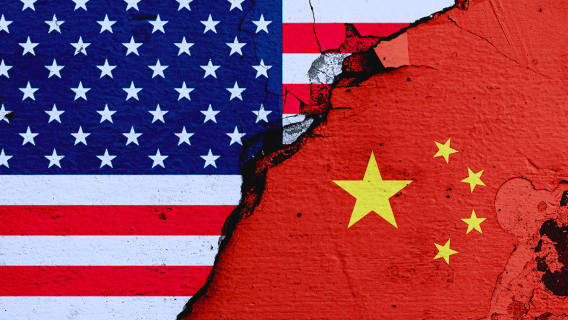The U.S.-China meetings this week in London highlight that the United States and China are engaged in an intense rivalry.
This is playing out along economic, technological, military, cyber, soft power, and global prestige.
Why should you care?
Because how it turns out will have a big impact on every family’s financial well-being and economic security, as well as America’s economy and national security. This is especially relevant for America’s stock market and your stock portfolio.
But as I will point out during my Thursday, June 12 webinar, with Chris Preston, economic security and technology issues are at the heart of the U.S.-China relationship. This means intellectual property theft, cyber espionage, forced technology transfer, dual-use risks, supply chain chokepoints, nontariff barriers to U.S. firms, and currency manipulation.
[text_ad]
Stock picking during the age of U.S.-China rivalry will be at a premium across advanced technologies, including AI, biotech, and quantum, and in critical minerals. It will be a period of turbulence with challenges and opportunities, and tomorrow we will discuss some questions, such as:
What are the best safe havens?
How should I organize my portfolio?
What stocks should I buy now?
What countries should I invest in for diversification?
How can we continue our efforts to protect assets through portfolio rebalancing while remaining alert to trading opportunities?
Behind both countries is a bloc of allies and partners, as well as non-aligned fence-sitters hedging their bets.
The rivalry that began around 1990 is much bigger than tariffs and trade deficits, Taiwan or semiconductors.
Both sides are searching for any tool, any weapon, any piece of leverage and influence they can use against the other, short of direct military action. The stakes are high as America and China are roughly the same size. Together, they represent an annual economic output of roughly $50 trillion — about 45% of world GDP.
Both countries have enormous public debt, and which country manages this issue better will likely win out in the long run.
China benefits from being the world-dominant manufacturing and trading nation and having superior size, scale and speed due to a population four times larger than America. This advantage can be best captured in shipbuilding, where China has gone from 5% share of global shipbuilding in 2000 to 55% today. China can build a ship three times faster and cheaper than we can build a ship in the United States.
While America has an edge in advanced technologies, China is closing the gap fast, producing four times more engineering graduates than America. America also benefits from the dollar being the world’s reserve currency and has deeper financial markets and a dominant stock market.
Our stock market reflects both our greatest asset and our greatest vulnerability since U.S. corporations have moved much of our industrial base overseas to China and other emerging markets seeking lower costs and thus higher profits and stock prices.
China has welcomed and manipulated these firms to gain critical direct investment and technology.
China has a closed financial system, which is limiting but is firmly under the control of the central government rather than being subject to market forces.
China’s economic strategy has been based on four objectives:
- Securing access to resources worldwide and dominating the processing of minerals.
- Dominating manufacturing across the supply chain while maximizing exports and foreign exchange
- Building infrastructure for logistics, shipping, and military and maritime dominance of the Western Pacific.
- Strategically pursuing overseas manufacturing capacity to secure access to international markets.
America’s network of allies, the reserve status of the U.S. dollar, an edge in advanced tech, a stronger military, and a more open society with respect for the individual are America’s chief strengths. In short, America’s “dynamic stability” brand is the keystone.
You can see why it is important for America and your portfolio for America to win the U.S.-China rivalry.
Join us tomorrow (or watch the webinar replay) to learn more.
[author_ad]
